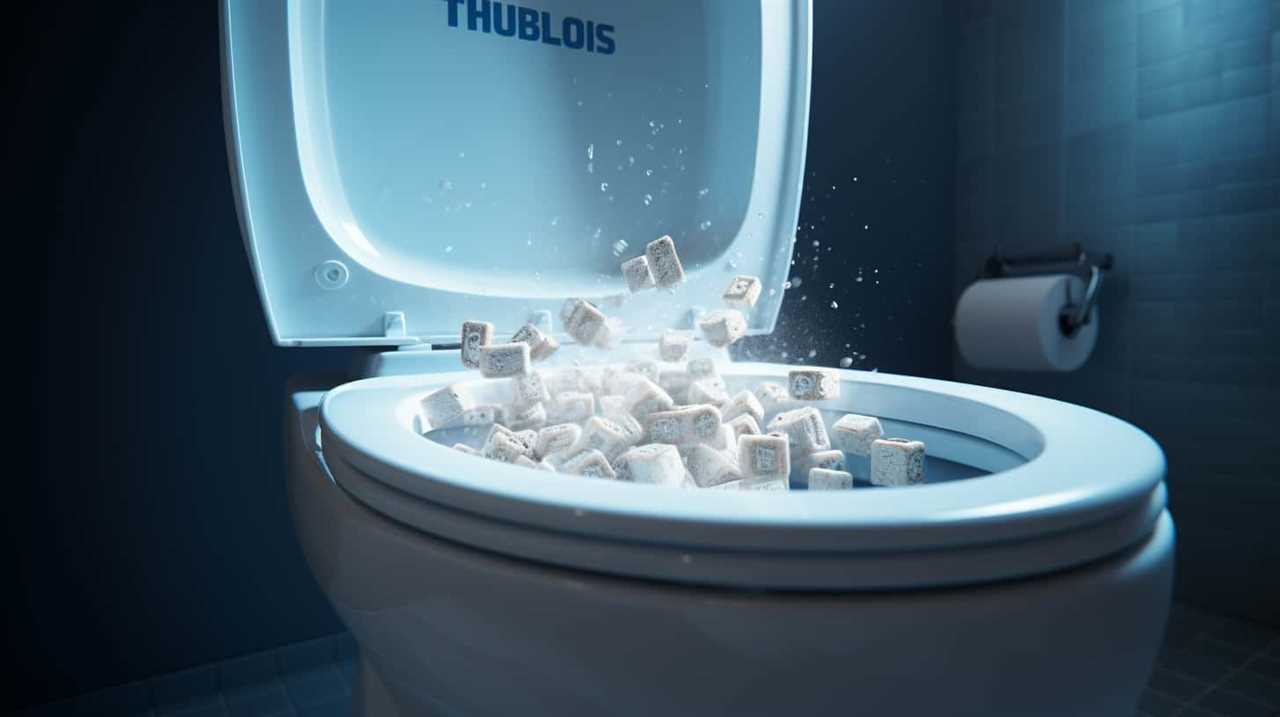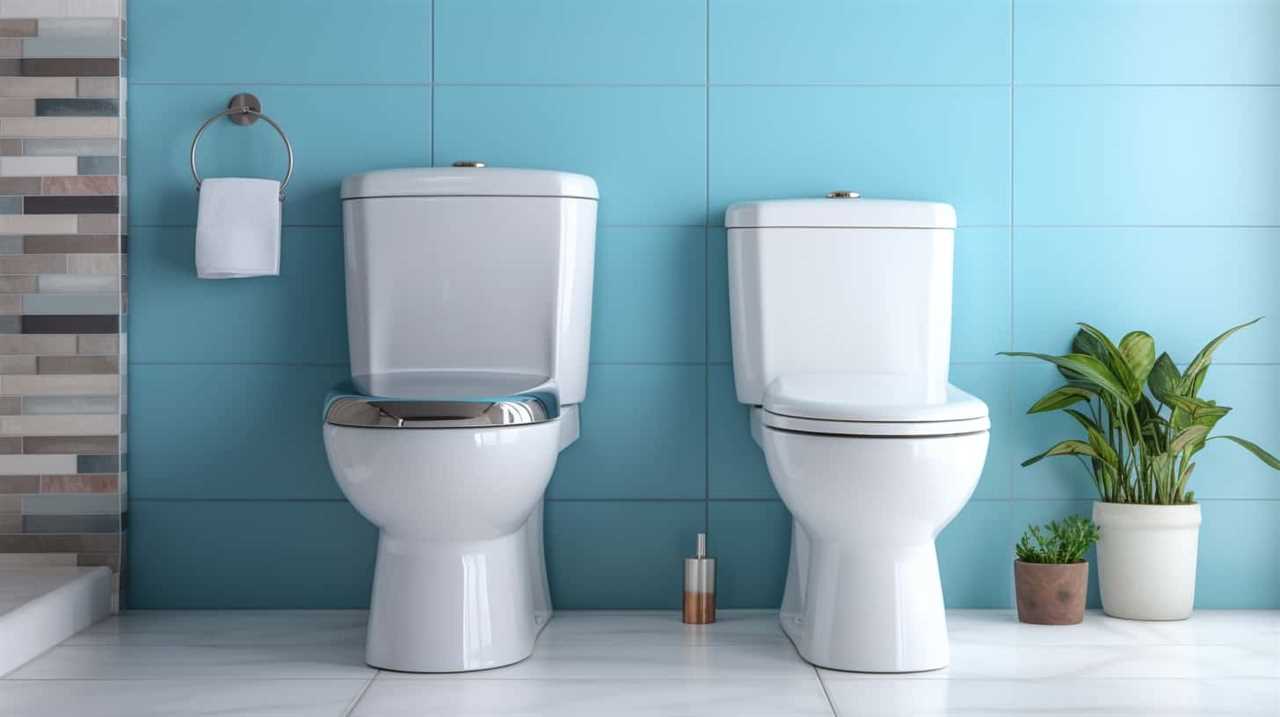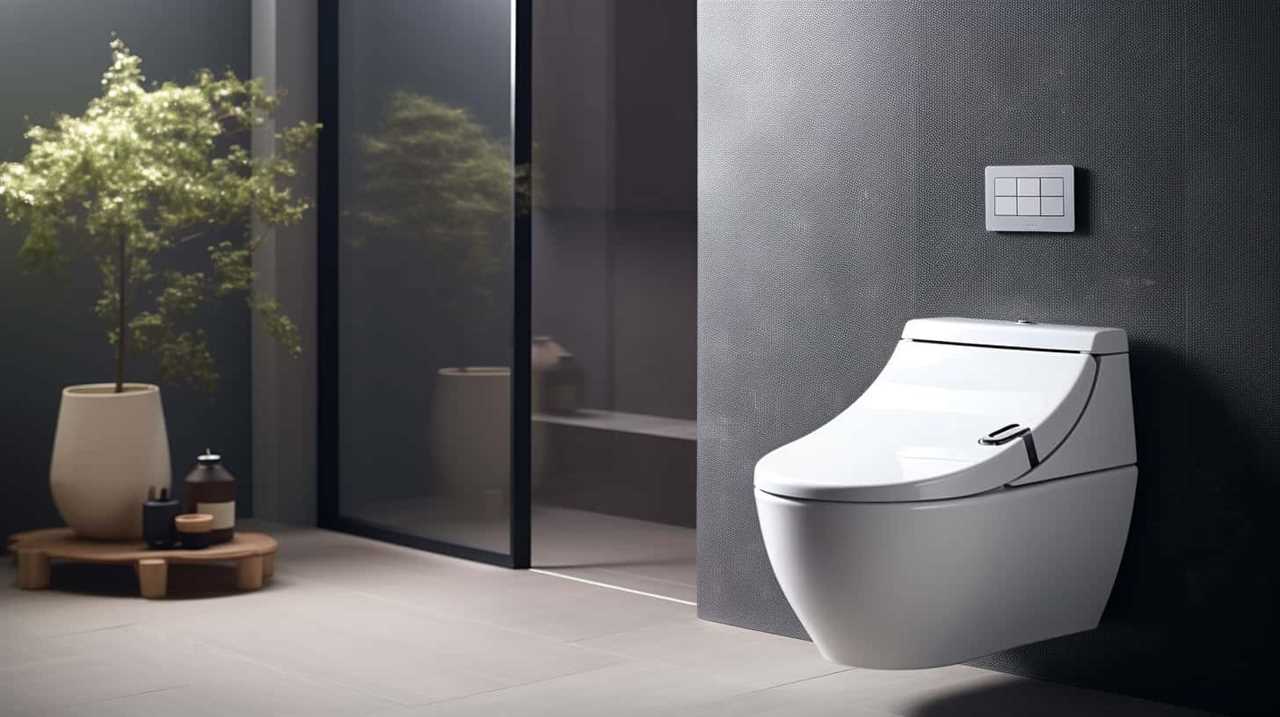Have you ever wondered what happens to all the toilet paper we flush down the toilet? Well, let us shed some light on this fascinating process.
When we flush, the wastewater travels through a complex network of pipes, making its way to the wastewater treatment plant. There, it undergoes a series of thorough and scientific treatments, including screening, biological decomposition, and final disposal.
Join us as we delve into the intricate journey of our precious toilet paper, unraveling the mysteries of its fate.
Key Takeaways
- City’s wastewater treatment plant is responsible for the collection, transportation, and treatment of raw sewage, including toilet paper.
- Screening and preliminary treatment processes separate solid waste from wastewater, ensuring cleaner water for further treatment.
- Biological treatment involves the use of microorganisms to break down organic matter, including toilet paper, into harmless substances.
- Final treatment focuses on transforming toilet paper and organic waste into biogas and biosolids, which can be further treated or used as fertilizer. Environmental impact is considered in choosing disposal methods.
Wastewater Collection and Transportation
Our city’s wastewater treatment plant is responsible for the collection and transportation of our flushed toilet paper. The process begins with the sewage treatment, where raw sewage undergoes a series of physical, chemical, and biological processes to remove contaminants and ensure safe disposal.
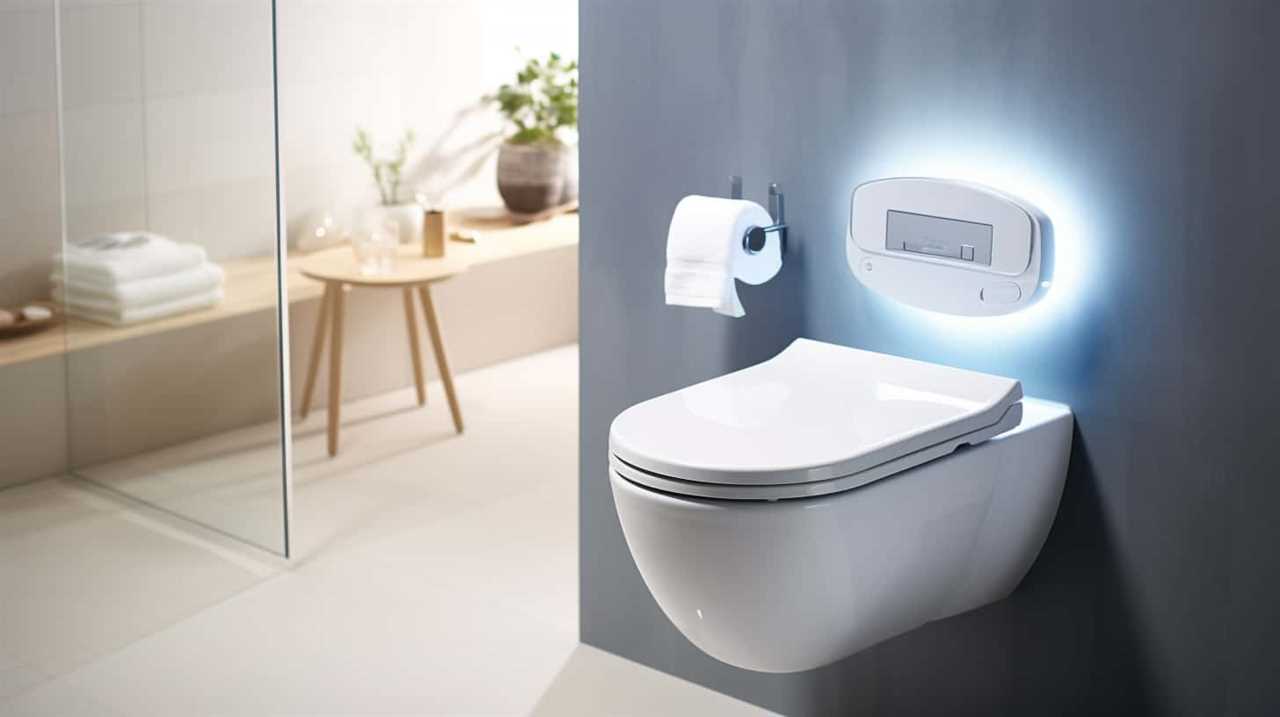
After the wastewater is treated, the resulting sludge is carefully managed. Sludge management involves various methods, such as dewatering, stabilization, and final disposal. Dewatering removes excess water from the sludge, reducing its volume and making it easier to handle. Stabilization processes, such as anaerobic digestion or composting, help further reduce the sludge’s organic content and odor.
Arrival at the Wastewater Treatment Plant
Upon arrival at the wastewater treatment plant, the flushed toilet paper undergoes a series of crucial processes to ensure its safe and sustainable treatment.
The first step involves the separation of solid waste from the wastewater through a process called screening. Large debris, including toilet paper, is removed and sent for further treatment.
The next stage is the breakdown of the toilet paper. This is achieved through a combination of physical and biological processes. Physical methods such as shredding and grinding help to increase the surface area of the paper, facilitating its decomposition.
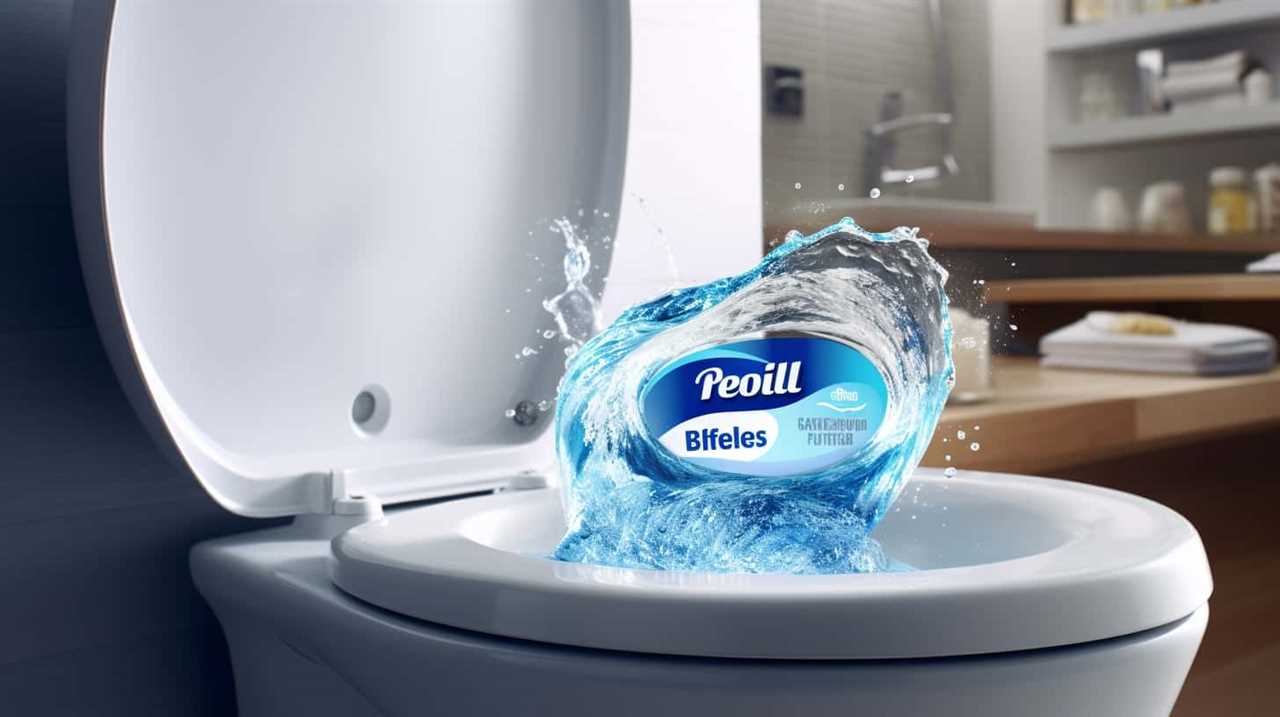
Biological processes involve the use of microorganisms that naturally break down organic matter. These microorganisms feed on the toilet paper, converting it into simpler compounds that can be easily treated.
This breakdown process is vital to minimize the environmental impact of the flushed toilet paper and ensure that it can be safely discharged or reused.
Preliminary Treatment and Screening
At the wastewater treatment plant, we begin the process of preliminary treatment and screening by using a compound preposition to separate solid waste from the wastewater. This step is crucial in sewage filtration and waste management.
The compound preposition, usually made up of a combination of chemicals, helps to break down larger solid particles in the wastewater into smaller ones. These smaller particles can then be easily removed through a series of screens and filters.
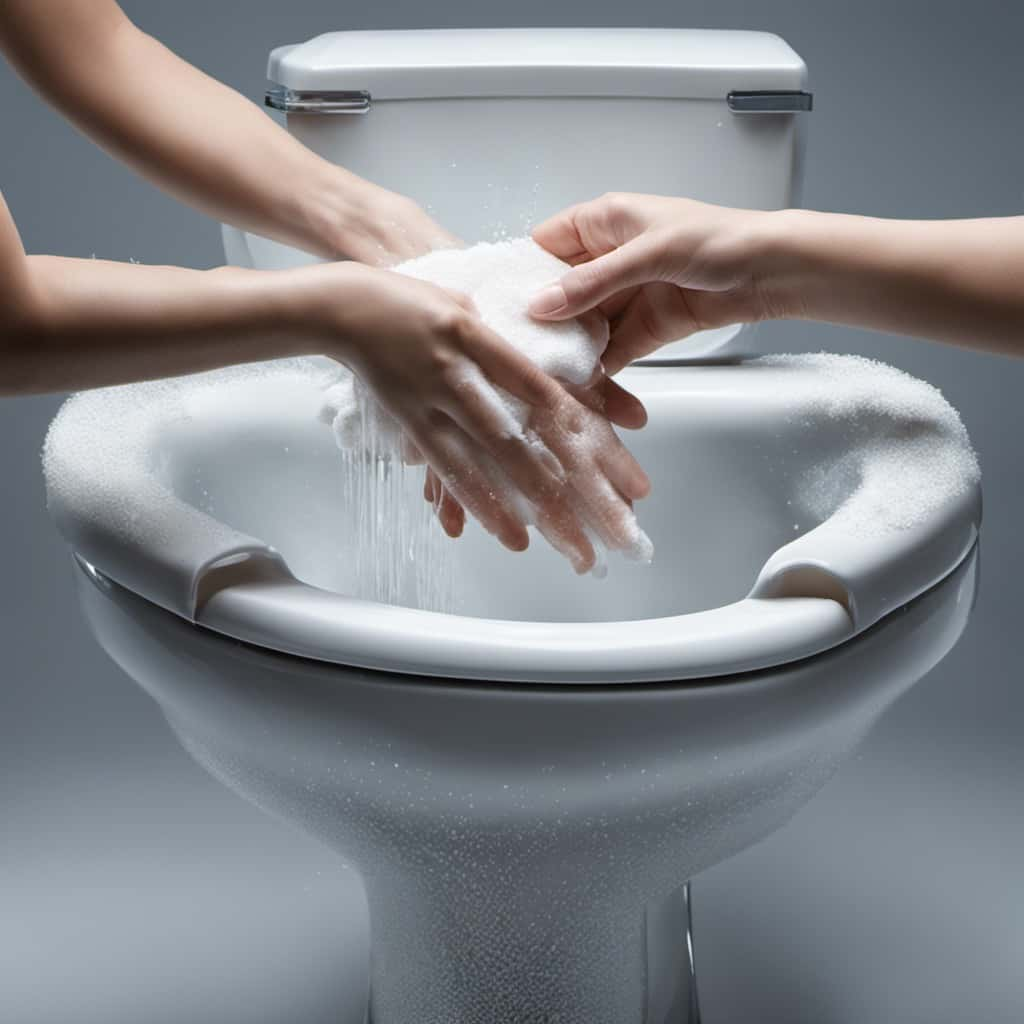
The screens and filters are designed to capture the solid waste, preventing it from moving further into the treatment process. By removing the solid waste at this stage, we ensure that the wastewater entering the next treatment steps is cleaner and easier to process.
This preliminary treatment and screening process sets the foundation for effective wastewater treatment and plays a vital role in maintaining the overall efficiency of the treatment plant.
Biological Treatment and Decomposition
After completing the preliminary treatment and screening process, we move on to the biological treatment and decomposition of the wastewater. This stage is crucial in breaking down the toilet paper and other organic materials present in the wastewater. Through the power of microbial action, the decomposition process begins.
Here is what happens during the biological treatment and decomposition:
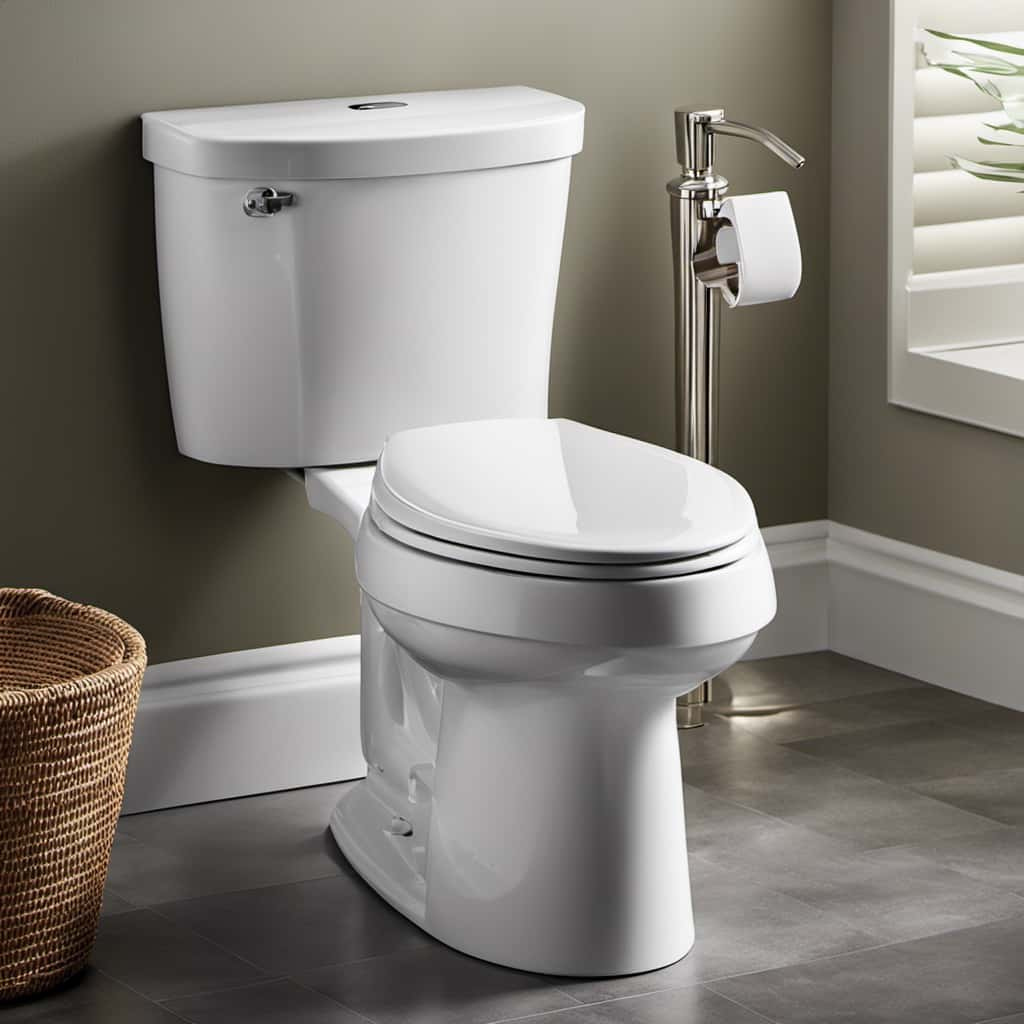
- Microorganisms, such as bacteria and fungi, are introduced to the wastewater.
- These microorganisms feed on the organic matter, including toilet paper, present in the water.
- As they consume the organic matter, they break it down into simpler compounds, such as carbon dioxide and water.
This microbial action is essential in transforming the toilet paper into more manageable and environmentally friendly substances. It’s a natural process that allows for the efficient removal of organic waste from the wastewater, ensuring that it can be safely returned to the environment.
Final Treatment and Disposal
Continuing the process of treating and disposing of the wastewater, we focus on the final treatment and disposal of the transformed toilet paper and other organic waste.
After the biological treatment and decomposition, the remaining solids are subjected to further treatment processes to ensure proper disposal. One common method is the use of sludge digesters, which break down the organic matter through anaerobic digestion. This process produces biogas, a source of renewable energy, and reduces the volume of the waste.
The resulting biosolids can be further treated to remove any remaining contaminants before they’re disposed of in landfills or used as fertilizer. It’s crucial to consider the environmental impact of the final disposal methods chosen. Proper waste management practices are essential to minimize any potential harm to ecosystems and public health.

Therefore, careful monitoring and regulation are necessary to ensure the safe and sustainable disposal of transformed toilet paper and organic waste.
Frequently Asked Questions
How Does Toilet Paper Affect the Wastewater Collection and Transportation Process?
Toilet paper recycling is crucial for minimizing the environmental impact of toilet paper. It ensures that the paper is properly processed in the wastewater collection and transportation process, reducing waste and promoting sustainability.
What Happens to the Toilet Paper Once It Arrives at the Wastewater Treatment Plant?
Once toilet paper arrives at the wastewater treatment plant, it goes through a process that includes screening, sedimentation, and filtration. The goal is to remove solid waste and harmful substances before releasing the treated water back into the environment.
Are There Any Specific Techniques or Processes Used for the Preliminary Treatment and Screening of Toilet Paper?
When it comes to preliminary treatment and screening techniques for toilet paper, we use a variety of methods to ensure proper removal. From filtration to sedimentation, we employ the best approaches for effective waste management.

How Does Biological Treatment and Decomposition Help in the Breakdown of Toilet Paper?
Biological treatment and decomposition play a crucial role in breaking down toilet paper. Microorganisms in wastewater treatment plants break down the cellulose fibers through enzymatic reactions, converting them into simpler compounds that can be further processed or discharged into the environment.
What Are the Different Methods of Final Treatment and Disposal of Toilet Paper Waste?
When it comes to the final treatment and disposal of toilet paper waste, there are various methods employed. These include incineration and composting, both of which play a crucial role in managing this essential yet often overlooked aspect of sanitation.
Conclusion
In conclusion, the journey of toilet paper after we flush it’s a fascinating process.
From being collected and transported through intricate wastewater systems to undergoing preliminary screening and biological treatment, it eventually reaches the final stage of disposal.
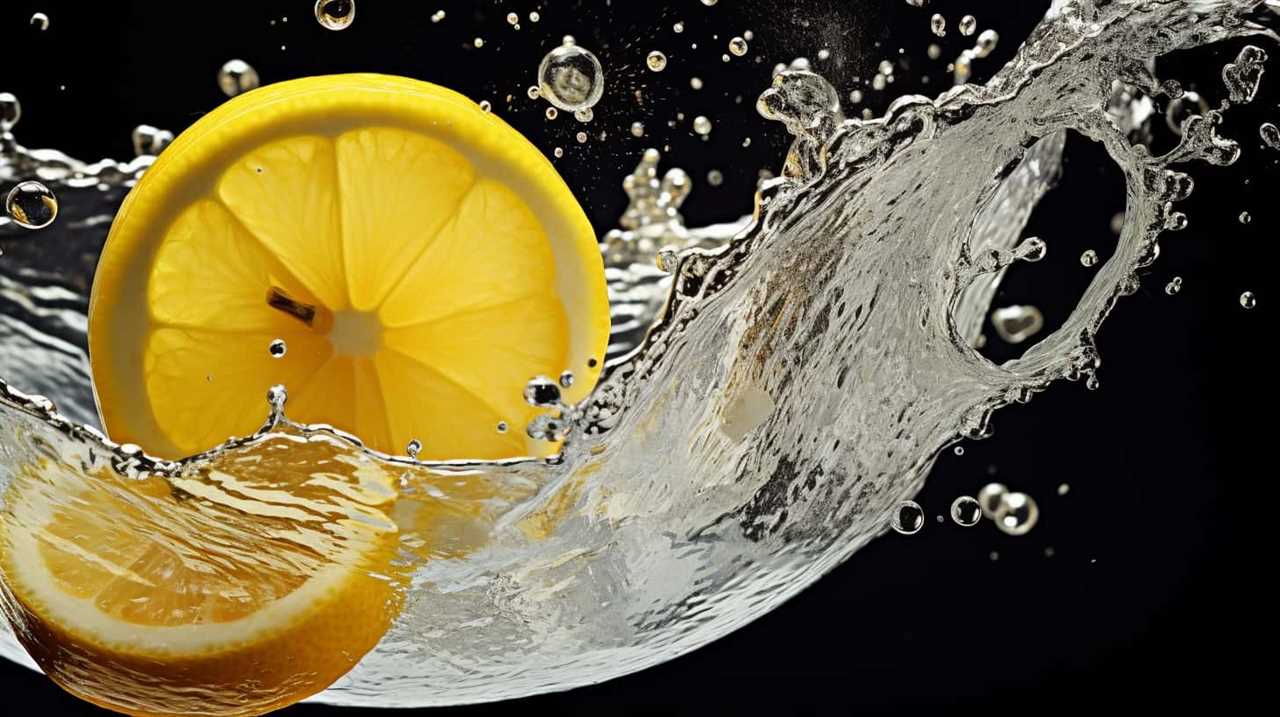
Through this journey, toilet paper undergoes a remarkable transformation, much like a caterpillar transforming into a butterfly.
So next time you flush, remember the intricate journey that toilet paper embarks upon, transforming waste into something more manageable.
